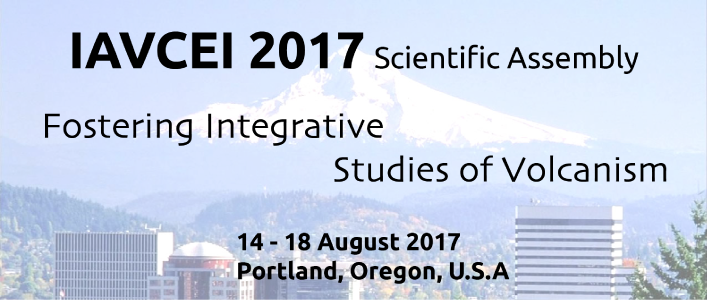SCIENTIFIC PROGRAM
III. From precursors to eruption
III.4 Wet volcanoes: aquifers and lakes and their related hazards
Conveners:
Audray Delcamp, Vrije Universiteit Brussel; delcampa@tcd.ie
Jessica Ball, USGS; jlball@usgs.gov
Engielle Mae Paguican-Fabbro, Vrije Universiteit Brussel; engiellepaguican@gmail.com
Benjamin van Wyk de Vries, Laboratoire Magmas et Volcans; B.vanwyk@opgc.fr
Dmitri Rouwet, Istituto Nazionale di Geofisica e Vulcanologia, Sezione di Bologna, Italy; dmitri.rouwet@ingv.it
Agnes Mazot, GNS-Wairakei, New Zealand; a.mazot@gns.cri.nz
Corentin Caudron, University of Cambridge, UK; corentin.caudron@gmail.com
Johan C. Varekamp, Wesleyan University, USA; jvarekamp@wesleyan.edu
Haruhisa Nakamichi, Sakurajima Volcano Research Center, Disaster Prevention Research Institute, Kyoto University, Japan; nakamiti@svo.dpri.kyoto-u.ac.jp
Volcanoes store large amounts of water in their porous layers, cracks, and cavities, whereas crater lakes can be subaerial exposures of underlying hydrothermal systems or direct receptacles of volcanic gases. “Wet volcanoes” can have phreatic and magmatic eruptions, and variations in composition and temperature of the aqueous fluids, and the level of seismicity can be used to monitor such activities. Unrest at wet volcanoes often culminates into phreatic eruptions, which are generally hard to predict. The “hydrocells” themselves also pose dangers, be it limnic eruptions or rupturing of the system with toxic floods. Similarly, ground water can play a major role during collapse by changing the volcano’s rheology. Modelling the hydrogeological system of volcanic aquifers is difficult since the environment is constantly changing and geophysical data and boreholes are limited.
We invite contributions that involve studies on wet volcanoes and active crater lake systems, using water and gas chemistry or geophysical surveys, hydrogeology with focus on water storage, migration, drainage, evolution with time, and contributions on the influence of water before and during landslides. In addition, work on numerical, conceptual and analogue modeling of fluid flow as well as eruption mechanisms of these volcanoes are welcome.


